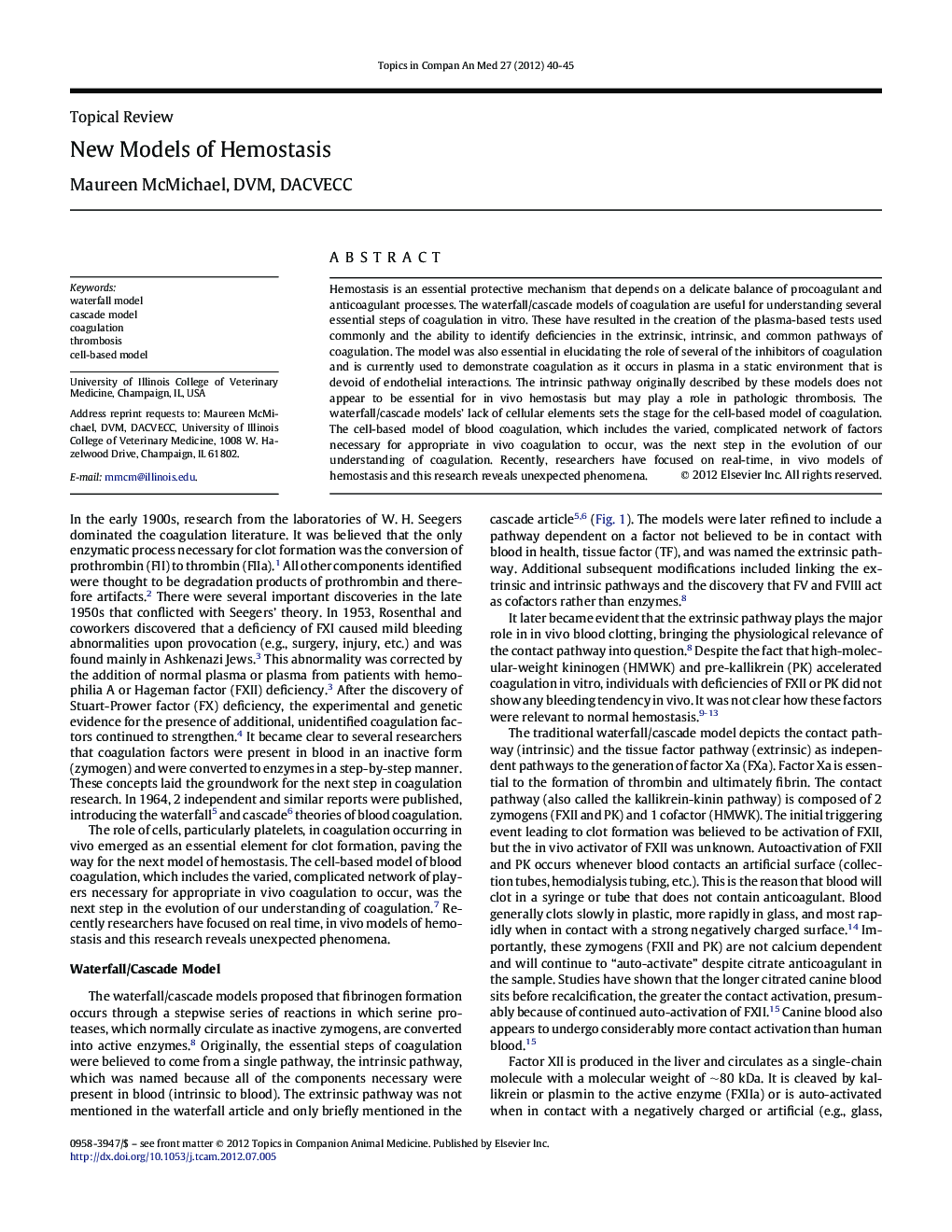| Article ID | Journal | Published Year | Pages | File Type |
|---|---|---|---|---|
| 2401256 | Topics in Companion Animal Medicine | 2012 | 6 Pages |
Hemostasis is an essential protective mechanism that depends on a delicate balance of procoagulant and anticoagulant processes. The waterfall/cascade models of coagulation are useful for understanding several essential steps of coagulation in vitro. These have resulted in the creation of the plasma-based tests used commonly and the ability to identify deficiencies in the extrinsic, intrinsic, and common pathways of coagulation. The model was also essential in elucidating the role of several of the inhibitors of coagulation and is currently used to demonstrate coagulation as it occurs in plasma in a static environment that is devoid of endothelial interactions. The intrinsic pathway originally described by these models does not appear to be essential for in vivo hemostasis but may play a role in pathologic thrombosis. The waterfall/cascade models' lack of cellular elements sets the stage for the cell-based model of coagulation. The cell-based model of blood coagulation, which includes the varied, complicated network of factors necessary for appropriate in vivo coagulation to occur, was the next step in the evolution of our understanding of coagulation. Recently, researchers have focused on real-time, in vivo models of hemostasis and this research reveals unexpected phenomena.
